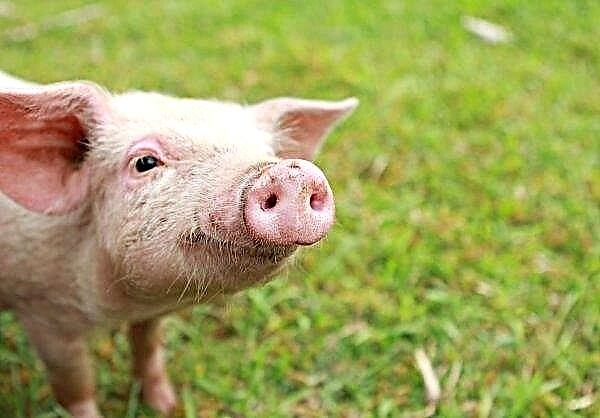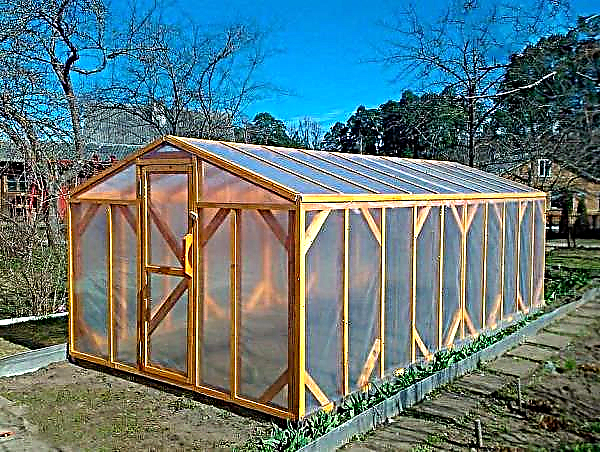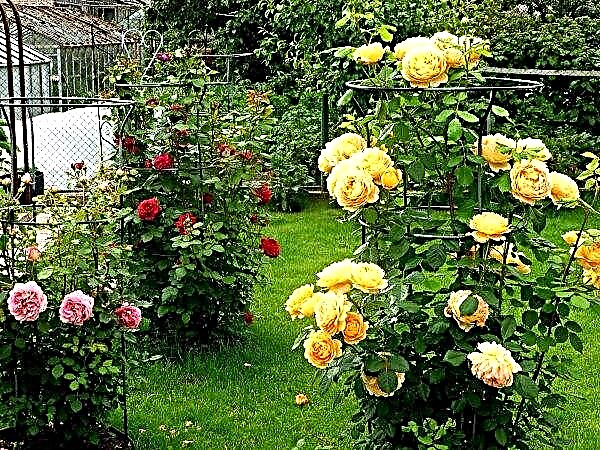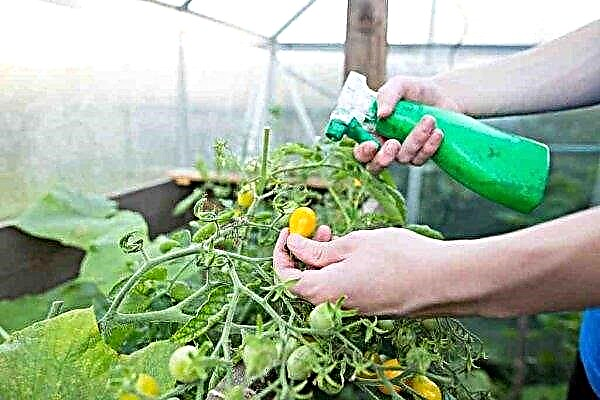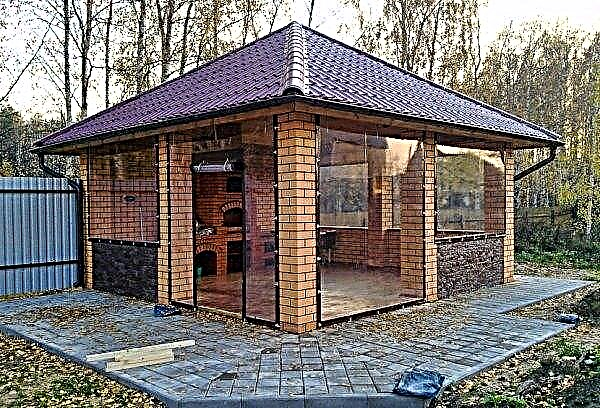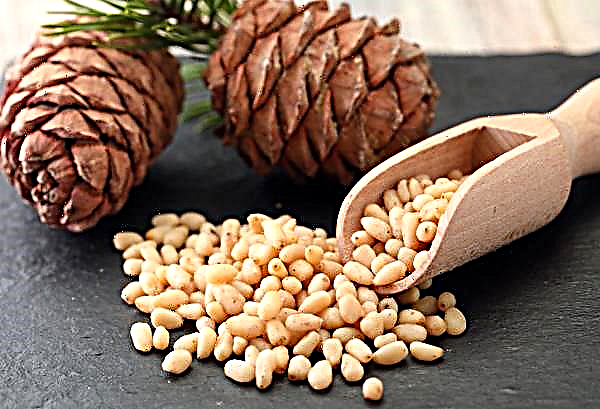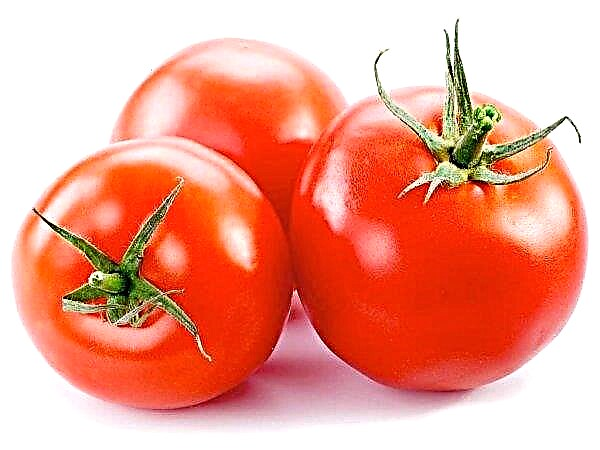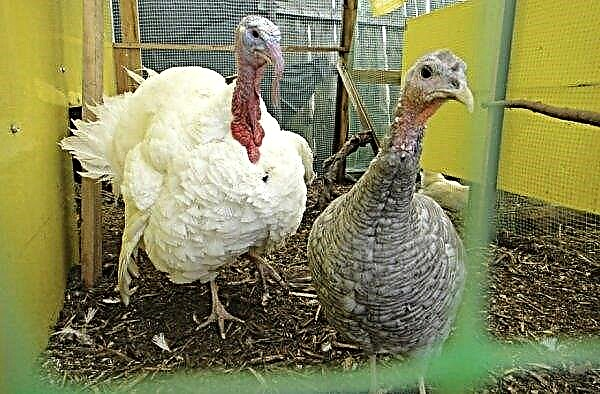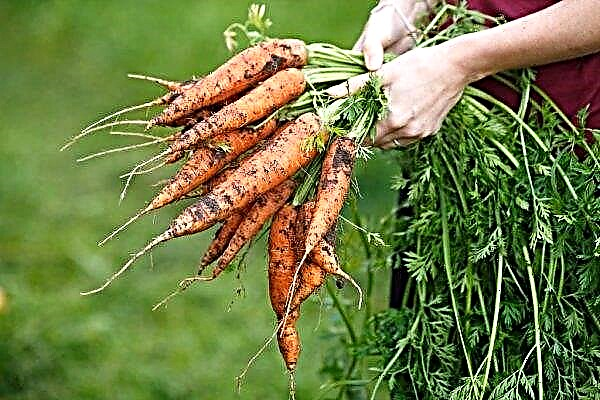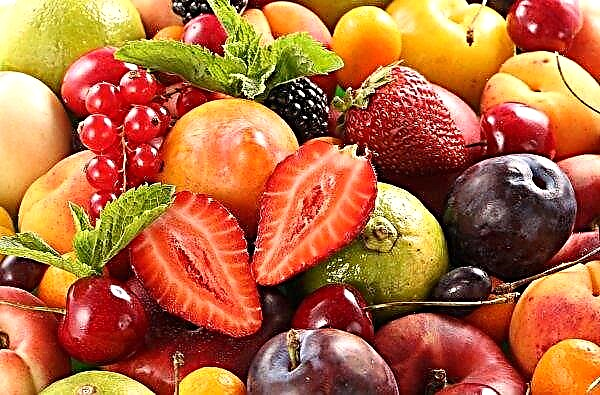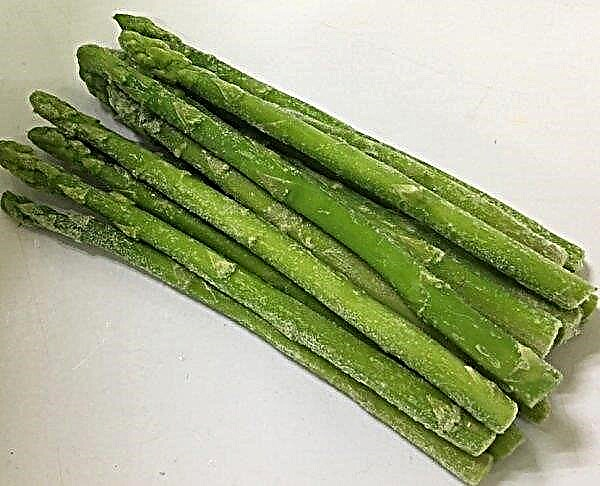Tomatoes are a crop whimsical to watering, because it depends on it productivity. In greenhouse conditions, where the microclimate is created artificially and differs from the natural one, the correct watering regime is especially important. In addition, at different stages of growth, tomatoes require a different rate of water.
Optimum microclimate in the greenhouse
In order for the tomatoes to grow actively in the greenhouse, to bear fruit early and plentifully, they need to create the necessary conditions:
- Temperature- The ideal temperature indicators on sunny days are +20 ... + 22 ° C, on cloudy days +18 ... + 19 ° C, at night +16 ... + 18 ° C. The extreme limits of the norm are +10 ... + 32 ° С.
- Lighting - bright, from 20 thousand lux. Daylight hours - 14-16 hours.
- Air humidity - average values - 60–70%. The permissible limits are 40–90%.
- Soil moisture - high, up to 80–90%. Each bush needs 4-5 liters of water. Drying of the topsoil is allowed no more than 3-5 cm.
Temperature and humidity are of primary importance for tomatoes, since at low temperatures these plants stop blooming (when lowering to +15 ° C) and grow (at +10 ° C), and at high (above +32 ° C) they photosynthesis slows down and pollen grains cannot germinate.Important! A combination of moist soil and dry air is ideal for a tomato.

Types of Watering
There are several ways to water tomato beds indoors. The choice of each of them is determined by personal preferences, the volume of the greenhouse and the number of shrubs, as well as monetary and time resources.
Did you know? Almost the entire weight of a tomato is water. It makes up to 95% of the total mass of each fetus.
Manual
This method of irrigation is the most economically profitable, it does not require financial investments, but in time and effort it is the most costly. Suitable for small greenhouses.
Manual watering is carried out using a bucket of water, a watering can or hose.
His great advantage isthat you water each individual bush, having the opportunity to pay attention to each plant, to identify diseases or errors in the content.
For large greenhouses, this method is not suitable, as you need to bring a large amount of water and spend a lot of time watering the entire area.
Auto
In contrast to manual irrigation, such a system is installed mainly in large industrial greenhouses. Watering occurs without human intervention. Financially expensive. You can install on a small plot in the household, but be prepared for financial expenses and the fact that the cost may not pay off.
The advantage of this system is that the irrigation process is fully automated - the system irrigates the beds in the right amount according to a predetermined schedule, maintaining the required water temperature.
The disadvantage is in installation complexity and high price.
Drip
The benefits of such irrigation are that it allows you to moisten large areas, and water gets directly to the roots, without increasing air humidity and not irrigating the leaves. It is carried out in two ways:
- By installing a special drip irrigation system in the store, which consists of a network of hoses with droppers.
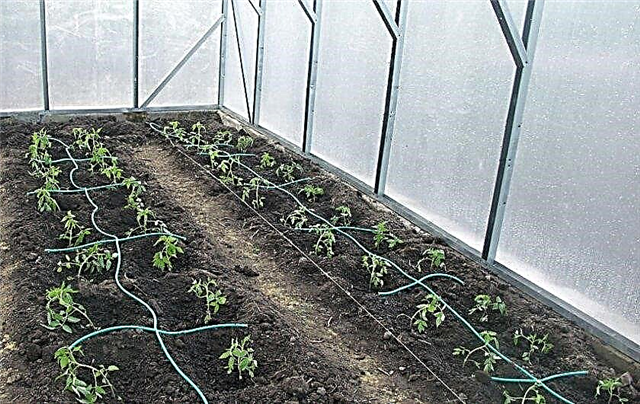
- With your own hand, creating a system for watering through plastic bottles, dug a neck in the ground and with a cut bottom.

It is carried out as follows:
- Take two-liter plastic bottles at the rate of one bottle per bush.
- In the cap of each bottle, make several small holes, no more than 2 mm in diameter.
- Cut the bottom. This can not be done completely, then it will look like a lid, which will avoid evaporation of water from the bottles.
- Dig the bottles into the ground under the bush to a depth of 15–20 cm, placing it at a slope of 30 °.
- Fill the bottles with water. Moisture will gradually seep to the roots, moisturizing them.
Basic rules for watering a tomato
Since watering for tomatoes is extremely important, it must be carried out correctly, being guided by the following standards:
- Water the bushes only at the root. Do not allow moisture to get on the stem or leaves.
- Depending on the stage of growth and the growing season of tomatoes Different watering rates are required. The same amount of water in different phases of growth can lead to spoilage of plants.
- The greenhouse needs to be equipped with windows for ventilation. This is necessary so that excess moisture does not accumulate in the air. At the same time, ventilation should not create drafts.
- To avoid evaporation of water and subsequent increase in humidity, the land around the bushes after irrigation can be mulched with mowed grass or water the plants by drip.
- To preserve moisture in the ground do not loosen the soil soon after you have watered the bushes.
- Water the tomatoes in the early morning or evening hours. And it is better if in the heat the irrigation will be evening.
- If watering is carried out in the evening, then after that the greenhouse needs to be well ventilatedotherwise, during the night when the greenhouse is closed, condensation will form inside, due to which tomatoes can become sick.
- If the weather is damp, cloudy and cool, watering is best in the morning, so that excess moisture disappears by night.
- Do not use water from the water supply, since it contains a lot of chlorine and lime.
- Optimum water temperature - not less than +20 ... + 22 ° С, ideal - +23 ... + 25 ° С.
Important! High humidity and condensation provoke the development of fungal diseases on tomatoes.
Irrigation frequency at different stages of tomato growth
Depending on the stage of development of the tomatoes, the difference in how often they need to be watered differs.
Upon landing
The success of growth and rooting at this stage depends on the receipt of sufficient moisture to the roots of the seedlings. However, when transplanting seedlings to a permanent place, its root system is still too weak, undeveloped and injured by a change of place. And the plants need a lot of water, but the roots are not yet able to independently draw it from the ground in sufficient quantities.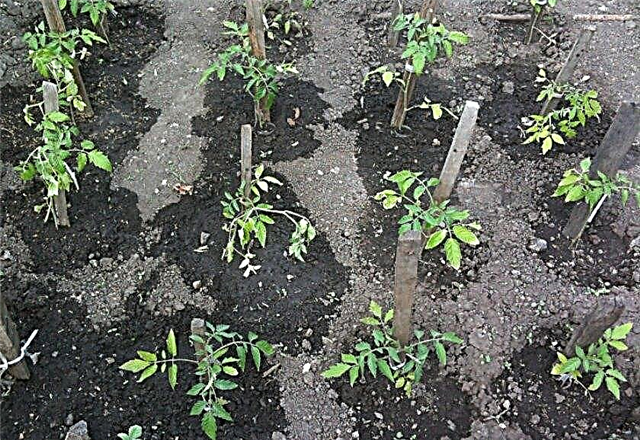
Therefore, during this period, tomatoes need to be provided with a plentiful supply of moisture. Watering should be plentiful, even everyday. However, liquid stagnation in the soil is unacceptable, because in this case root and stem rot may occur. Therefore, you need to water a lot, but so that the water does not stagnate and has time to dry out a little.
Did you know? “Tomatl” and “Matl” were the so-called Aztecs tomatoes, which meant “large berry”.
With active growth
This phase lasts from the moment of rooting of plants to their flowering. This is a period of active growth when new leaves and stems form. The roots are already strong, they are quite branched and are able to collect enough water.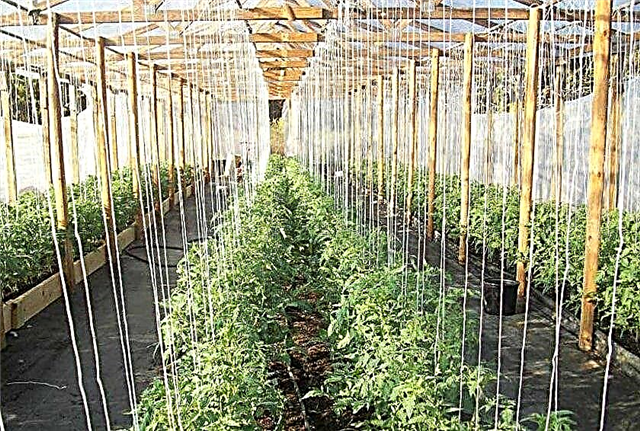 However, during this period, tomatoes do not really like an excess of moisture, especially if it affects the leaves. Therefore, watering the bushes is necessary less often - once every 5-6 days after the top layer of the earth dries by 3-4 cm. And the amount of water is reduced to 2-3 liters per bush.
However, during this period, tomatoes do not really like an excess of moisture, especially if it affects the leaves. Therefore, watering the bushes is necessary less often - once every 5-6 days after the top layer of the earth dries by 3-4 cm. And the amount of water is reduced to 2-3 liters per bush.
Important! Watering only the top layer of the soil without penetration of water into the depths provokes the surface growth of the root system, which makes it weak, unable to go deeper and get all the useful substances necessary for life from the soil.
During flowering
When plants bloom, the frequency of watering should be slightly reduced - up to 1 time per week. However, the amount of water under one bush must be increased to 5 liters.
During fruiting
When ripening fruits, it is important to ensure sufficient watering, as the ripening of tomatoes depends on water. However, an excess of moisture during this period is also undesirable - from an excess of liquid, the fruits begin to crack, and their taste becomes inexpressive and watery.
Tomatoes begin to water more abundantly with the appearance of the first fruit ovaries. Now watering should be carried out 2 times a week, the volume of water under each bush is 2-3 L. The peculiarity of the fruiting of tomatoes is that there comes a stage when you need to reduce and stop watering them. Redness of the first fruits should serve as a signal for reduction. From this moment, water again 1 time in 7-10 days, otherwise the tomatoes will crack and freeze in growth.Did you know? Surprisingly, tomato is the closest relative of such different plants as tobacco and potatoes. All of them belong to the Solanaceae family.
 Watering can stimulate the ripening of fruits. To do this, you need to stop watering the tomatoes - this activates their processing of the "energy" of the sun, because of which they will begin to ripen faster. The last watering is carried out 20 days before the harvest.
Watering can stimulate the ripening of fruits. To do this, you need to stop watering the tomatoes - this activates their processing of the "energy" of the sun, because of which they will begin to ripen faster. The last watering is carried out 20 days before the harvest.Signs of improper watering
Improper watering, whether it is insufficient or excessive, affects the condition of the tomato.
Signs of insufficient watering:
- Leaves become small, rare, wrong. They begin to dry, turn yellow, curl.
- Slowing and stunting at any stage in the development of tomatoes - they grow slowly, the fruits do not ripen.
- During flowering, the flowers begin to crumble., and at the beginning of fruiting, the ovaries fall.
- The taste of the fruit changes in the negative direction - it becomes bitter and unpleasantly tart.
- Gray and vertex rot. These diseases often arise precisely because of a lack of moisture.
- The leaves are succulent, but become pale, dull and fall off.
- The fruits, although retaining their color brightness, crack. Tomatoes become tasteless, watery on the palate.
- The appearance of wet spots on the root neck. These spots spread further, causing rotting of the root system.

Useful Tips
In order for the tomatoes in the greenhouse to grow well and bear fruit, adhere to the following recommendations:
- The polycarbonate greenhouse is ideal for tomatoes. Unlike glass and polyethylene, which are also used as materials for greenhouses, polycarbonate can be used for a long time, holds heat well and provides plants with diffused bright light, protecting their leaves from burns.
- Ventilate the greenhouse necessary after each irrigation, regardless of what time it was carried out. This will avoid increasing humidity inside.
- Water tomatoes during the day is permissible only if the weather is cloudy. Sunlight will cause burns to plants.
- For providing the beds with enough light, you need to make sure that the structure of the greenhouse has a minimum number of ceilings. Dust on the glass must be regularly cleaned, and beds should be organized so that the bushes do not obscure each other.
- During flowering, excessive moisture in the greenhouse is unacceptable. During this period, pollen should fall on the pestle and pollinate it, and if it is wet, pollination does not occur.
- Increase in air temperature to +25 ... + 26 ° С during flowering It stimulates a more rapid onset of the fruit ripening period.
- The volume of water needed by the tomatoes should be regulated depending on weather conditions - in hot weather the amount needs to be increased, and in cloudy and cool weather - reduce.


